Dogs have been called humanity’s most loyal companions for thousands of years, but some breeds take devotion to a whole new level. Whether it’s their instinct to protect, their eagerness to please, or simply their unshakable bond with the people they love, certain dogs are famous for sticking by your side no matter what.
These breeds don’t just enjoy your company, they thrive on it, often forming deep, almost inseparable connections with their families. From gentle giants who shadow your every move to energetic sidekicks who live for playtime and cuddles, these loyal dog breeds are more than pets; they’re partners for life.
If you’ve ever dreamed of having a four-legged best friend who will celebrate your highs, comfort you in the lows, and never let you walk alone, you’re in the right place. Let’s explore some of the most steadfast and affectionate breeds that redefine what loyalty truly means.
Best Loyal Dog Breeds That Will Never Let You Go
1. German Shepherd
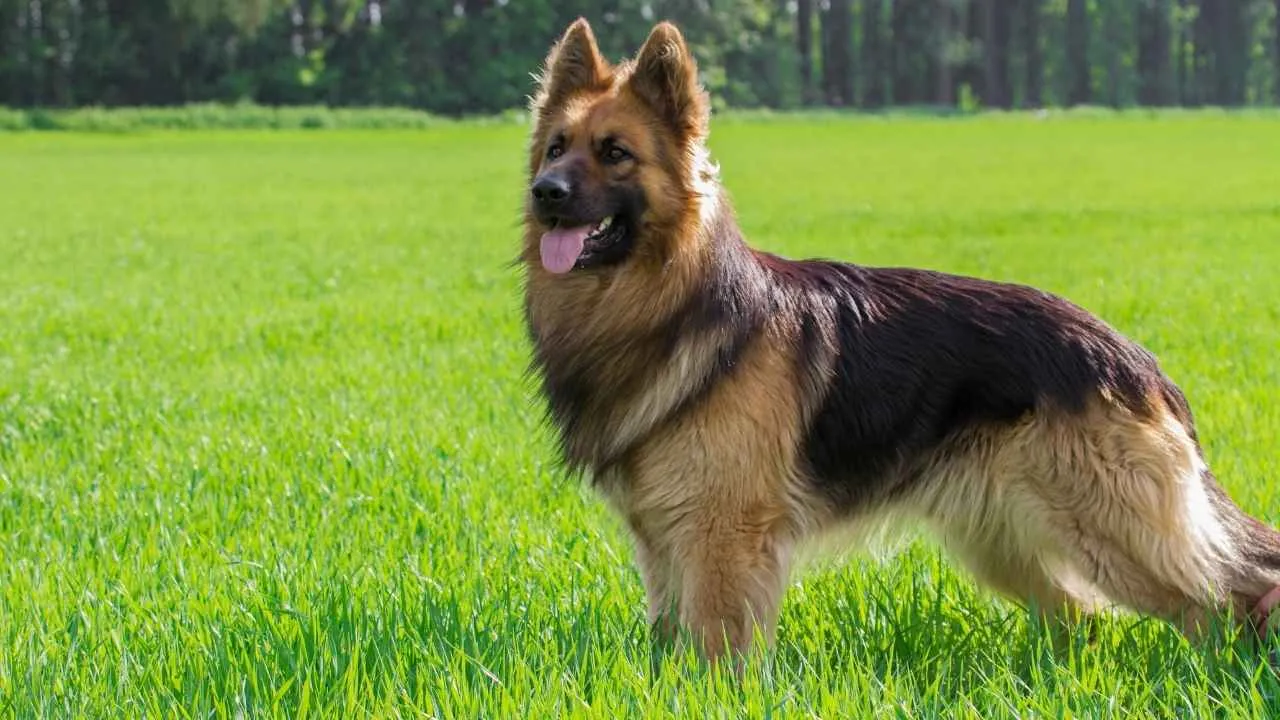
German Shepherds are among the world’s most versatile working dogs, combining agility, strength, and noble character. Known for their intelligence, they excel in roles ranging from police work to therapy, but they’re just as happy serving as loving family companions.
According to the AKC, this breed is fiercely loyal, often forming an unbreakable bond with its family. Protective instincts make them natural guardians, but early socialization ensures they remain confident and approachable in everyday life.

Regular training is essential, as their intelligence demands both mental and physical stimulation. Positive, consistent methods keep them engaged and well-mannered.
Their dense double coat sheds heavily during seasonal changes, so weekly brushing is key. Occasional baths and nail care help maintain overall health.
Daily exercise is non-negotiable. Long walks, play sessions, and activities like agility or herding trials prevent boredom and reinforce their working-dog heritage.
Quick Tips
Provide at least one hour of exercise daily.
Begin socialization and training from puppyhood.
2. Labrador Retriever

Labrador Retrievers are counted among America’s most popular family dogs for good reason. Affectionate and eager to please, they thrive in households with children, other pets, and even strangers. Their loyalty is matched by their playful, people-focused nature.
Labs are natural athletes with strong builds and webbed feet that make them exceptional swimmers. Families that enjoy outdoor adventures—whether hiking, swimming, or playing fetch—find the breed a perfect fit.
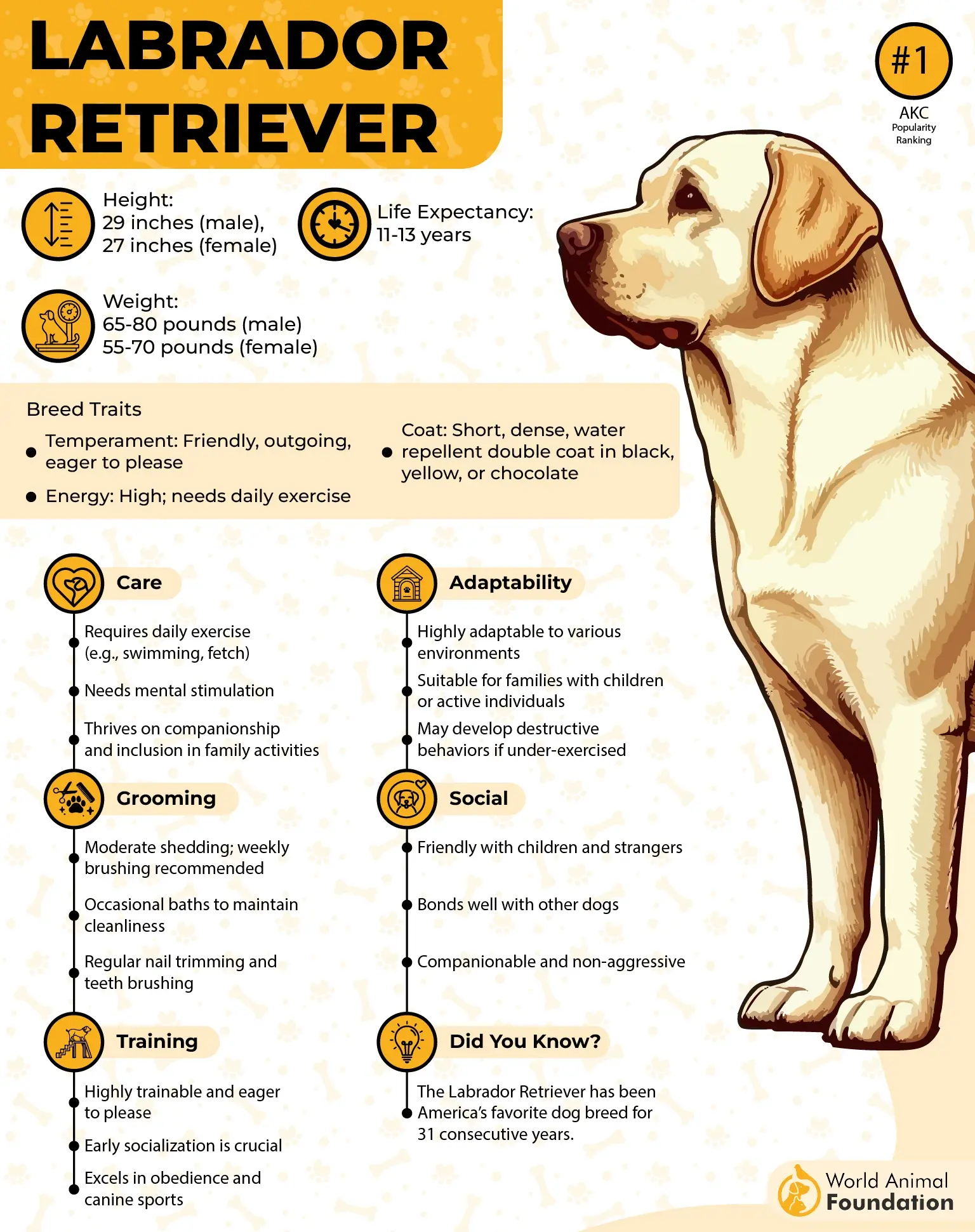
They are generally healthy but prone to conditions such as hip dysplasia, elbow dysplasia, and eye disorders like progressive retinal atrophy. Reputable breeders test for these concerns, and regular vet visits are essential.
Coat care is important, as Labradors have a thick, water-repellent double coat that sheds heavily. Frequent brushing and routine ear cleaning reduce the risk of infections caused by trapped moisture.
These dogs need plenty of activity—about an hour daily—to avoid destructive behavior. Their energy, intelligence, and trainability also make them excellent service and therapy dogs.
Quick Tips
Brush frequently to manage shedding.
Use slow-feeder bowls to prevent overeating.
3. Golden Retriever
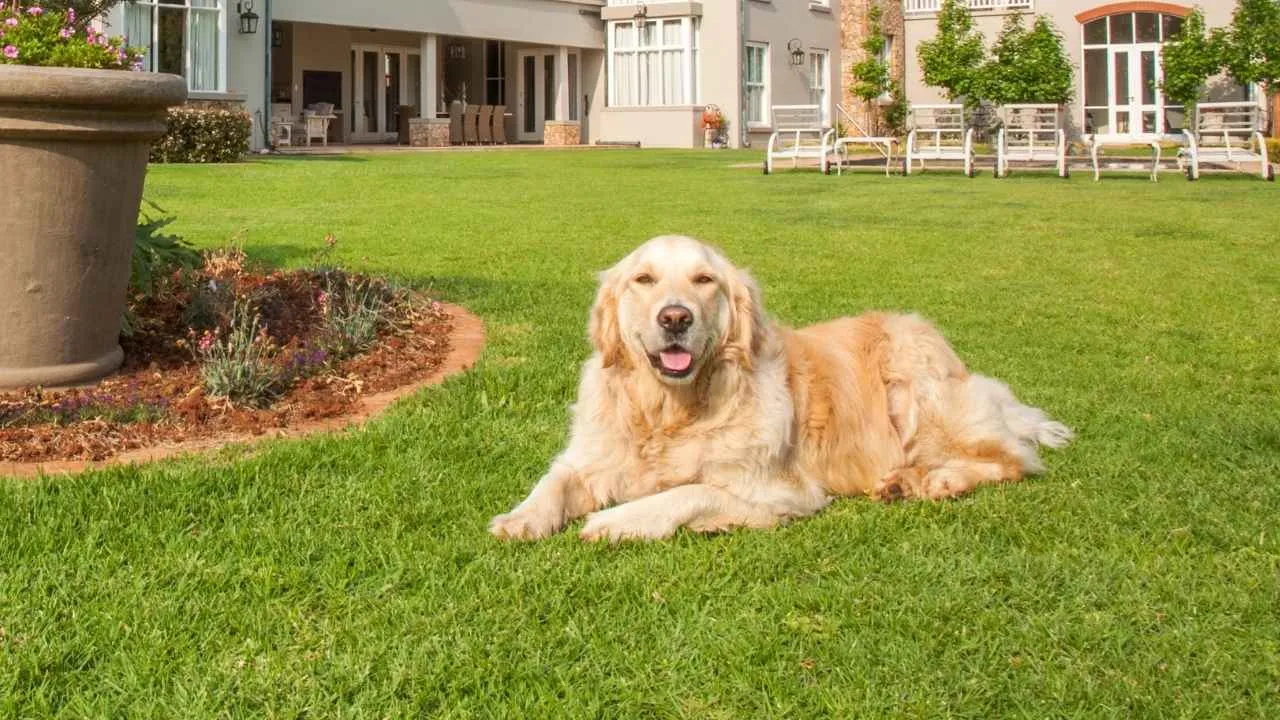
Golden Retrievers are beloved worldwide for their warmth and steady temperaments. With proper socialization, they integrate seamlessly into family life, showing patience with children and affection toward other pets.
Their loyalty shines in their constant desire to be near their people. This trait, combined with their intelligence, is why they are so often chosen as therapy and guide dogs.
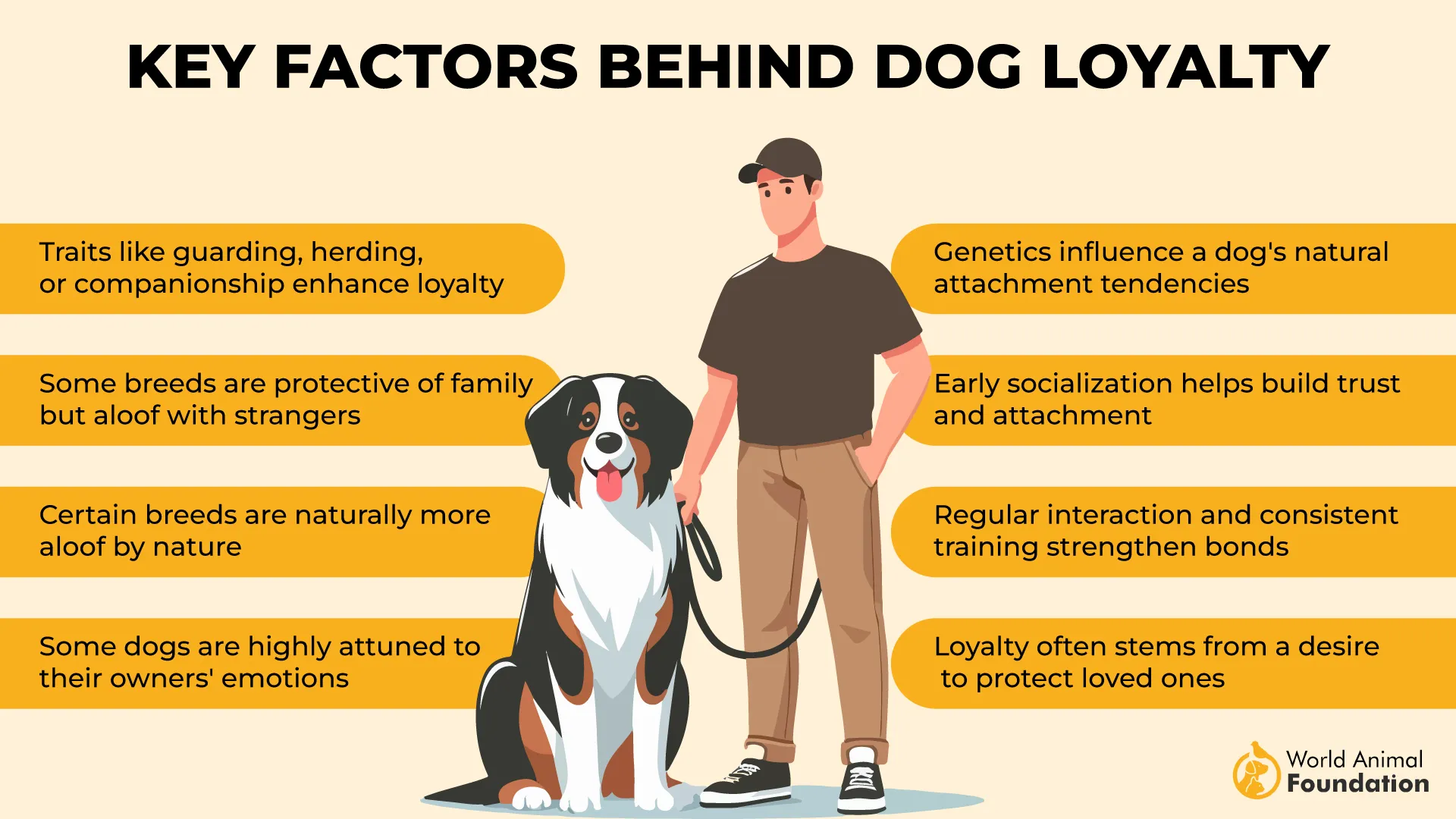
PDSA states that exercise is essential, with at least two hours daily of walking, games, and swimming. Goldens excel at activities like fetch, which tap into their natural retrieving instincts while keeping them mentally sharp.
Owners must commit to grooming, as Goldens shed heavily. Brushing several times a week (daily during coat changes) keeps hair manageable and their coat healthy.

Though generally hardy, Golden Retrievers face breed-specific health risks, including hip and elbow dysplasia, cataracts, and skin conditions like ichthyosis. Preventive care and weight management go a long way in maintaining their well-being.
Quick Tips
Plan for daily exercise and mental stimulation.
Brush often to reduce shedding and maintain coat quality.
4. Akita
Akitas are a striking Japanese breed, best known for their plush coats, curled tails, and foxlike expressions. Once hunters, they are now symbols of loyalty and health in Japan, famously represented by Hachiko, the dog who waited years for his owner.
These large dogs bond deeply with their families but are often reserved with strangers. Their loyalty is unwavering, but they require experienced handlers due to their strong will and natural independence.
Akitas are prone to hip dysplasia, hypothyroidism, and certain eye conditions, so routine veterinary care and responsible breeding are important. Their lifespan averages 10–14 years.
Heavy seasonal shedding means daily brushing during coat changes, and regular skin and ear care is vital, as the breed can face sebaceous adenitis and infections. Their thick double coat makes them better suited to cooler climates.
Training must begin early with consistent, reward-based methods. Akitas can excel at activities like agility and scent work, but usually prefer being the only pet in the home.
Quick Tips
Provide firm, consistent training from puppyhood.
Split meals into smaller portions to reduce bloat risk.
5. Doberman Pinscher
Dobermans are sleek, muscular dogs bred for protection and companionship. Their elegant physique, wedge-shaped head, and glistening coats in black, blue, red, or fawn give them an unmistakable presence.
Renowned for loyalty, they are deeply bonded to their families and make vigilant guardians. With training and socialization, they are not only reliable protectors but also affectionate companions.
Dobermans require regular exercise to channel their athleticism. Long walks, canine sports, and access to a safe yard help prevent restlessness. They thrive in homes where they are part of family life rather than left outdoors.
Health concerns include bloat, hip dysplasia, heart conditions like dilated cardiomyopathy, and inherited disorders such as von Willebrand’s disease. Responsible breeders test for these risks, and owners should remain proactive with vet care.
Though low-maintenance in grooming, routine brushing, nail trimming, and ear cleaning are necessary. Their short coats make them easy to keep clean, but regular dental care supports long-term health.
Quick Tips
Begin obedience and socialization early.
Keep them mentally engaged with training and canine sports.
6. Beagle
Beagles are compact scent hounds with boundless energy and curious personalities. Their long, floppy ears enhance scent detection, making them exceptional trackers. With their expressive faces and sturdy builds, they’re instantly recognizable and loved worldwide.
This breed is outgoing and thrives in family environments. Beagles are loyal and affectionate, but their mischievous streak means they sometimes follow their noses into trouble. Early training, paired with treats, helps encourage good manners.
They need ample exercise—at least one to two hours daily—since they were bred to hunt in packs. Apartments aren’t ideal; instead, they flourish in homes with space to roam.
As per Purina, Beagles are generally healthy, living 12–15 years, but their appetite requires portion control to avoid obesity. They also bark frequently, making them excellent watchdogs, but sometimes a noisy presence.
Their short coats shed moderately and require weekly brushing. Despite being low-maintenance in grooming, their energy and vocal nature demand consistent attention. With proper care, they remain happy, spirited companions.
Quick Tips
Keep them mentally stimulated with games and scent work.
Use treat-based training to manage stubborn behaviors.
7. Chihuahua
Chihuahuas are the smallest dog breed, but their personalities are anything but tiny. Confident and expressive, they often bond most closely with one person, becoming fiercely protective of their chosen companion.
Their loyalty makes them stand out among small dogs, with many owners describing them as devoted “shadow” pets that follow them everywhere. Though small in stature, they make excellent watchdogs thanks to their alertness and sharp bark.
Chihuahuas do best in warm climates and are sensitive to the cold due to their size. Sweaters and cozy blankets help keep them comfortable.
Exercise needs are modest—short daily walks and indoor play are enough. Still, they enjoy activities that challenge their sharp minds, such as basic trick training.
They live long lives, averaging 12–20 years, but need careful dental care, as their small mouths are prone to dental issues.
Quick Tips
Protect them from cold weather with extra warmth.
Brush teeth regularly to prevent dental disease.
8. French Bulldog
French Bulldogs are beloved for their big personalities in small, sturdy frames. With their bat-like ears and expressive eyes, they are among the most popular companion dogs worldwide.
Loyal and affectionate, Frenchies thrive in homes where they receive constant companionship. They can be prone to separation anxiety if left alone too long, making them best suited for families with flexible schedules.
These dogs require minimal exercise compared to other breeds. Short walks and indoor playtime usually satisfy their daily needs, though caution is necessary in hot weather due to their flat faces.
Health concerns include breathing difficulties, spinal issues, and skin fold infections. Careful monitoring, regular vet visits, and responsible breeding practices help reduce these risks.
Though grooming is simple, their wrinkles must be cleaned daily to avoid infections. Weekly brushing also keeps shedding manageable.
Quick Tips
Avoid overexertion, especially in warm weather.
Clean skin folds daily to maintain healthy skin.
9. Newfoundland
Known as “gentle giants,” Newfoundlands are large working dogs with calm, affectionate natures. Despite their size, they are famously good with children, inspiring the beloved “Nana” character in Peter Pan.
These dogs are loyal and protective, often acting as natural guardians of their families. Their steady temperament and willingness to help make them excellent companions.
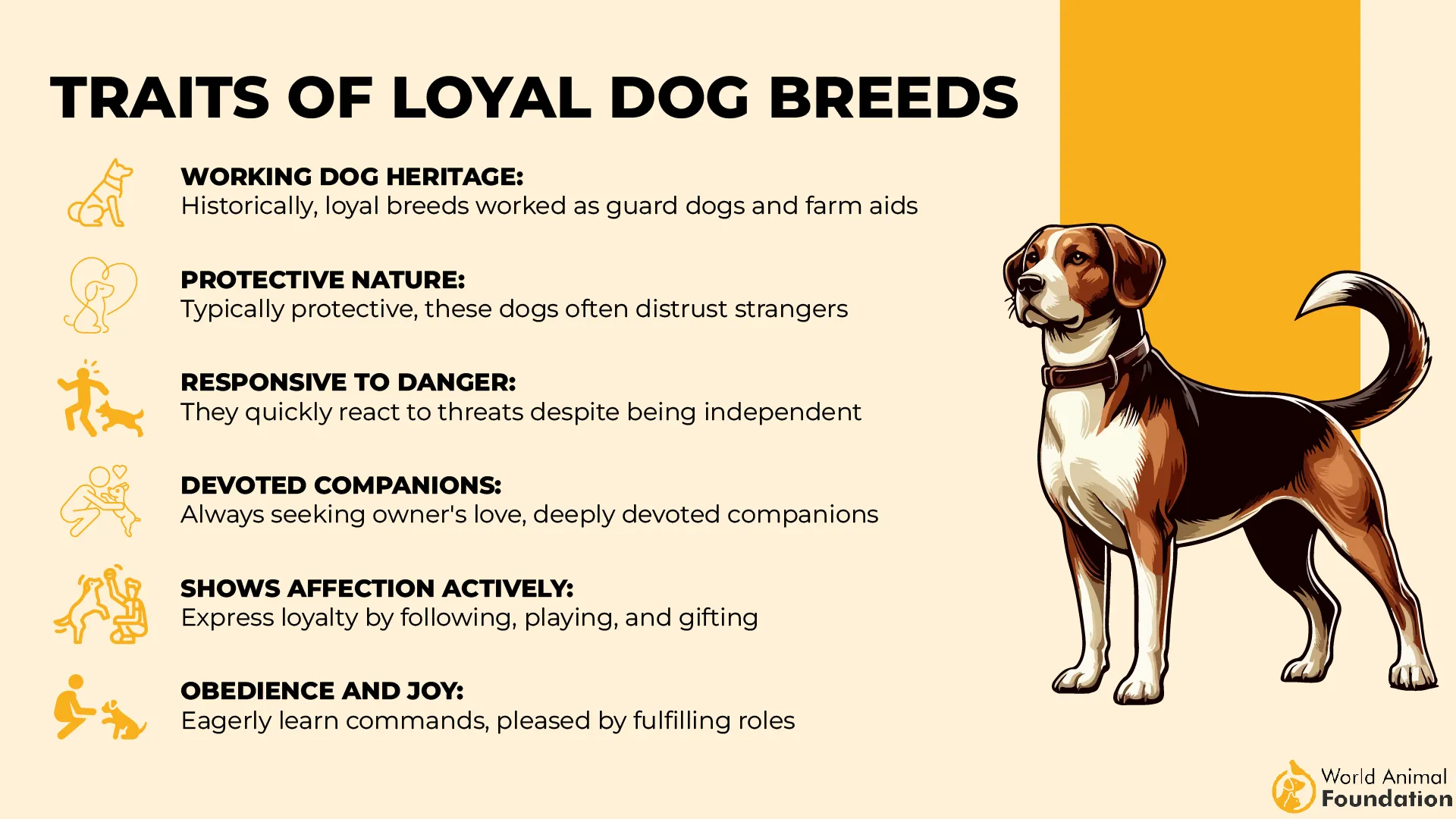
They require significant exercise, needing more than two hours daily to stay healthy. Swimming is a favorite activity, as their powerful bodies and water-resistant coats were originally bred for rescue work.
Health risks include hip dysplasia, heart problems, and a relatively short lifespan of 8–10 years. Regular vet checks and weight management are essential for their well-being.
Newfoundlands shed heavily and need grooming every other day to manage their thick coats. They also drool frequently, which potential owners should be prepared for.
Quick Tips
Ensure daily vigorous exercise, especially swimming.
Groom frequently to prevent mats in their dense coat.
10. Collie
Collies are iconic herding dogs, long associated with loyalty thanks to stories like Lassie Come-Home. Athletic and intelligent, they combine high energy outdoors with a gentle, family-friendly demeanor indoors.
They are loyal companions who thrive on human interaction, often bonding closely with children. Their affectionate and protective nature makes them reliable family dogs.
Collies are intelligent and easy to train, but require mental and physical activity to stay happy. Without stimulation, they may become vocal or restless.
Coat care is significant, especially for rough-coated Collies, which need weekly brushing and seasonal extra grooming during shedding. Smooth-coated Collies require less upkeep but still shed.
Common health issues include Collie Eye Anomaly, MDR1 mutation (sensitivity to certain drugs), and progressive retinal atrophy. Responsible breeding and early screening reduce these risks.
Quick Tips
Provide daily outdoor activity and mental enrichment.
Brush coats regularly, especially in shedding season.
Conclusion
Loyalty is one of the most treasured qualities in dogs, and it’s what makes them such great family dogs and lifelong companions. From fiercely devoted protectors to gentle dogs who adore children, loyal breeds consistently show an unwavering devotion to their human family. With proper training, socialization, and care, these dogs become not only good family dogs but also reliable guardians, affectionate friends, and in some cases, even highly skilled service dogs.
Certain breeds are naturally protective, athletic dogs that thrive on daily activity, while others are velcro dogs who stick close to their special person. Whether you’re drawn to a little dog with a big personality, a fun-loving companion with a long life span, or larger, naturally protective family pets, the right match depends on your lifestyle and commitment. Loyal breeds may develop separation anxiety if left alone too long, so keeping them engaged and included is key to raising well-behaved, affectionate dogs.
Other dogs, such as the Australian Shepherd, Great Dane, Saint Bernard, and Great Pyrenees, are also known for their loyalty, making them some of the best breeds and great companions among the most popular dog breeds today.


